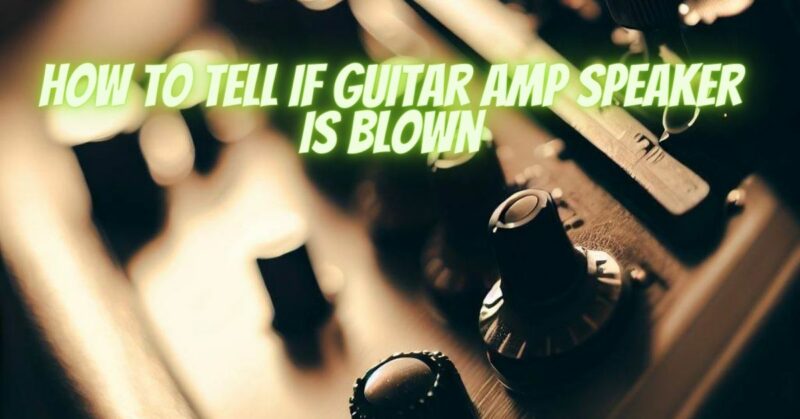A blown speaker in your guitar amp can significantly affect your tone and audio quality. It’s important to be able to identify the signs of a blown speaker to address the issue promptly. In this article, we will discuss common indicators that can help you determine if your guitar amp speaker is blown, allowing you to take appropriate steps for repair or replacement.
- Distorted or Muffled Sound: One of the most obvious signs of a blown speaker is distorted or muffled sound. If your guitar amp produces distorted tones or lacks clarity, it may indicate a damaged or torn speaker cone. The distortion can be heard across different volume levels or specific frequency ranges.
- Rattling or Buzzing Noises: A blown speaker can produce rattling or buzzing sounds, especially at higher volume levels or when playing low frequencies. This rattling or buzzing noise is caused by the damaged components of the speaker, such as a torn cone or loose voice coil.
- Lack of Power or Volume: A blown speaker may result in reduced power or volume output from your guitar amp. If you notice a significant decrease in volume or overall power compared to previous performance, it could indicate a damaged speaker.
- Excessive Vibration or Movement: Inspect the physical behavior of the speaker while the amp is in use. A blown speaker may exhibit excessive vibration or movement beyond what is typical. If you observe the speaker cone visibly shaking or flapping, it is likely damaged and in need of repair.
- Burning Smell or Smoke: In extreme cases, a blown speaker may emit a burning smell or produce smoke. This can occur when the voice coil or other internal components have been severely damaged. If you notice any burning smell or see smoke coming from your amp, immediately turn it off and seek professional assistance.
- Visual Inspection: Carefully examine the speaker cone for visible signs of damage. Look for tears, holes, or sagging areas in the cone material. Additionally, inspect the speaker frame and magnet assembly for any visible damage or loose parts.
- Compare with a Known Working Speaker: If possible, connect your guitar amp to a known working speaker or use a different cabinet to see if the issue persists. This helps determine if the problem lies with the amp’s speaker or elsewhere in the signal chain.
Conclusion:
Identifying a blown speaker in your guitar amp is crucial for maintaining optimal sound quality. By recognizing the signs of a blown speaker, such as distorted or muffled sound, rattling or buzzing noises, reduced power or volume, excessive vibration or movement, burning smells or smoke, and visible damage, you can take appropriate action to repair or replace the speaker. Consult a qualified technician or speaker repair specialist to assess the damage and provide recommendations for repair or replacement. Addressing a blown speaker promptly ensures that your guitar amp continues to deliver the desired tone and performance.


